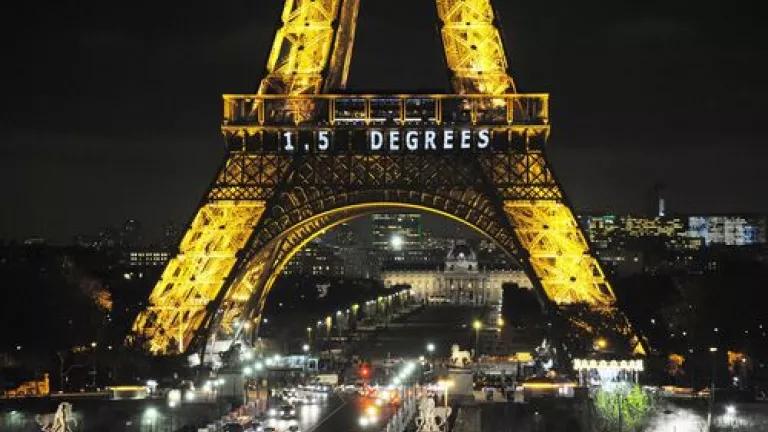
The international community welcomed a new Canada at the Paris climate negotiations, one which played an energetic and constructive role in reaching a historic agreement to limit the carbon pollution that is driving global climate change. In stark contrast to delegations sent by the Harper administration to obstruct critical progress, Prime Minister Trudeau and Environment Minister Catherine McKenna positioned Canada to take a leadership role in the negotiations - advocating to limit rising temperatures to 1.5 degrees Celsius, committing $2.65 billion in climate aid for developing countries and offering $300 million annually to support clean technology development. Minister McKenna's role in supporting some of the important provisions supporting the underlying structure for the agreement led to her appointment as one of the 14 special facilitators to support the negotiations process - the first time Canada has played this role in over a decade. As Canada's leaders return to Ottawa, they have a great opportunity to establish Canada's reputation as a climate leader by setting a new an ambitious climate target and adopting the bold policies necessary to deliver on its goals.
Moving beyond Paris, Canada's federal government has committed to work with provinces to create a "pan-Canadian framework" that includes emissions targets and plans for achieving them. Trudeau's government has not yet improved on the climate targets set by the Conservative Harper government - a target to reduce greenhouse gas emissions by 30 percent below 2005 levels by 2030. This target needs to be significantly improved for Canada to meet its G8 commitments to reducing its carbon emissions by 80% by 2050. With a more ambitious goal of limiting warming to 1.5 Celsius set in Paris, an even more ambitious target will be required. The Climate Action Network Canada urged that the country commit to reducing emissions roughly 37% below 2005 levels by 2025 (or about 460 Mt CO2e), in line with a target of zero emissions in 2050.
Most importantly, the pan-Canadian framework must develop a concrete plan for achieving its targets. Under the Harper government, a lack of federal action on climate paired with a support for tar sands expansion put Canada off-course from meeting its 2020 climate target by 122 Mt CO2e, which will more ambitious action to make up for previous inaction. As Figure 1 highlights, bending Canada's emissions curve to meet its goal to decarbonize in the coming decades can be achieved but will require additional ambitious action across the country.
Figure 1: Canada's 2025 climate targets under various 2050 scenarios

Putting Canada on a path consistent with its new commitments will require an ambitious policy package to transition the country to clean energy sources that are consistent with efforts to rapidly decarbonize the global economy. That will require turning away from carbon enabling industries and infrastructure - including the proposed Energy East and Kinder Morgan tar sands pipelines - and building a just energy future that based on 100% clean power sources by 2050.
While hard work lies ahead, Canada has taken a strong step forward in helping the international community reach a historic agreement that creates a roadmap for a safer climate. It is now up to Canada and the international community to take that path through concrete action domestically.




